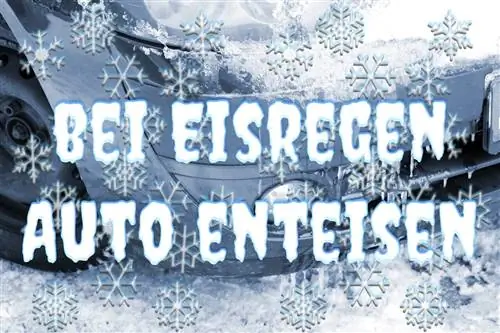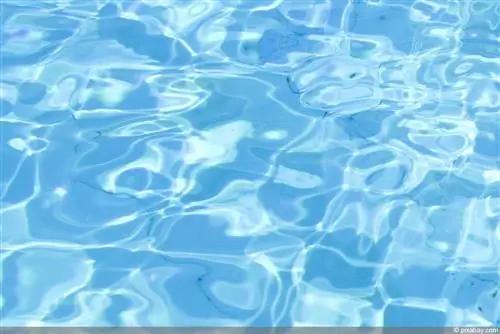- Author admin [email protected].
- Public 2023-12-17 03:39.
- Last modified 2025-06-01 06:48.
If you have a raspberry plant that produces berries with real raspberry flavor, you may have been looking for this natural raspberry variety for a while. When repurchasing becomes difficult, only propagation can ensure that the real raspberry flavor remains in the garden. If you have purchased a brand new premium cultivar and want to replant your property with these raspberries, propagation would also help, even your bank balance; Unfortunately, it is not certain that the premium breeding variety can be propagated well outside of a laboratory.
Why propagate raspberries?
Perhaps you were lucky right from the start and your first raspberries from the garden center next door feel great in your garden and garden soil and bear fruit full of raspberry aroma. Then it is of course more effective to buy the next raspberry of this variety from the garden center for a few euros. In this case, propagation is more of an option for parents who want to familiarize their children with the world of plants or for house builders who want to equip long meters of green fence with inexpensive plants.
However, the career of the average raspberry grower looks a little different: he sees a beautifully grown raspberry, for example. B. in a catalog that bears large red fruits whose intense taste is particularly emphasized. These raspberries also grow quite nicely in the garden and actually bear large red fruits, but their taste is clearly more in the direction of watery than in the direction of “intense raspberry aroma”. This is followed by a period of good advice (“Don’t water so much before the harvest”, “There are no trace elements”, “Have you applied raspberry fertilizer XY?”), following which no longer gives the raspberries any more flavour. Then the next cultivars move in until at some point there is a raspberry plant underneath that bears raspberry-flavored fruit.
This raspberry plant usually no longer comes from the garden center next door, but as an offshoot from friends/neighbors, from an organic nursery or as an insider tip from a plant swap meet. It cannot be bought quickly, the only way to get there is to multiply it.
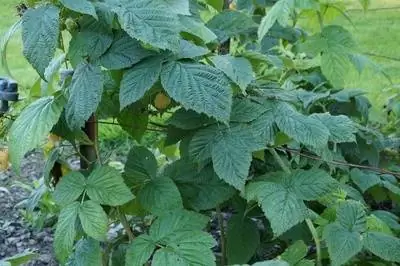
Tip:
With freshly planted raspberries, you should wait to propagate them until they bear full fruit: regardless of whether you bought and planted “guaranteed disease-resistant” raspberries or just raspberries (without giving raspberry diseases a thought) - Before propagation, the adult raspberry should be examined closely for signs of fungal or other infestation. With the “guaranteed disease-resistant” raspberry you will then know whether the dealer also meant the diseases in your region, with the “just-so-raspberry” whether it was a stroke of luck or actually attracts fungi; In any case, you should only propagate tested, he althy plants.
Propagate your own raspberries
If you want to propagate a modern raspberry variety, you have to rely on vegetative propagation; d. H. You have to try to get a clone from the plant.
Modern breeding varieties are now mostly created in the laboratory or through rapid breeding selection, and important plant characteristics often fall by the wayside. The resistance and the ability to produce secondary plant substances (which are responsible for the “real taste”) are at great risk because both are based on many different genes; The plant's ability to reproduce is often also affected. The breeding plants sometimes no longer produce seeds at all, sometimes these do not develop properly, and sometimes they germinate well but do not necessarily produce plants of the breeding variety to be propagated (if a breeding variety was advertised as an F1 hybrid, this is certainly the first one). For traditional breeders, the crossing step is no more than the first step on the long path to pure breeding plants; you can find out more about modern breeding below).
So the modern cultivar has to be propagated asexually vegetatively (via growth), which won't bother you if all you care about is more harvest of the same raspberries. Plants can be “cloned” from different parts; the following methods are suitable for raspberries:
1. Propagation by lowering
Lowering is meant literally here, autumn raspberries in particular should be persuaded to produce new plants by placing a rod on the ground, fixing it there and covering the area with soil.
When roots form, new leaves will soon form. The small raspberry can then be plucked out in spring and planted in its own location. If a cultivar forms sinkers, you can start propagation throughout the garden year.
2. Propagation by cuttings
Propagation from raspberry cuttings works a little differently than the experienced gardeners among you are used to because you cannot take cuttings from the plant itself. The shoots of raspberries are not normal branches, but above-ground continuations of soil shoots known as rhizomes, which die after fruiting; They are not intended for other propagation or root formation (which is why raspberries are not actually propagated using lowering plants; because they are so different, experts call the shoots of raspberries “rods”).
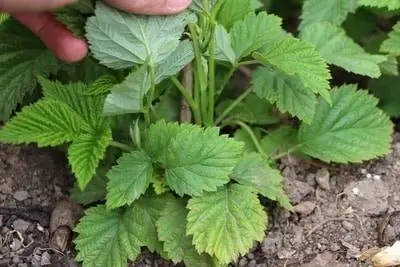
So the cutting here is taken from the root, several approx. 10 cm long sections with at least one eye or simply a piece of root that is cut off from the rhizome of the raspberry in late autumn. The plant parts are placed in a growing bed with humus-rich soil loosely set with sand and covered with a layer of mulch. After one season at the latest, the sections should have developed into new plants that you can transplant to your desired location.
Tip:
Propagation via rooted plant parts is part of everyday life for most plants on our planet, e.g. B. for survival until sexual reproduction that ensures evolution is successful. Until recently it was the daily bread of home gardeners (instead of spring bulk purchases at the garden center), but with modern cultivars it is no longer a successful option in every case. If “fast-and-dirty breeding” involves gross interference with the genome, modern breeding may hardly produce any runners anymore, but it cannot create a new plant from root parts. Or sinkers root in a way that is not typical of the species, but never grow into fertile plants. Since the behavior is hardly predictable, you should try different methods of vegetative propagation with such varieties until one works.
Let raspberries multiply
If you have already had some experience with raspberries, you have probably already ended up with the old raspberry varieties that have hardly been genetically modified (because they are selected by hand) or even with the original wild raspberry.
The original wild raspberry always reproduces through root runners, and the old cultivars naturally do the same. In the past, people were happy when they found new crops without having to dig into their wallets, but at the moment there is a rapid increase in the number of gardeners who also find such a perspective sensible.
If you cultivate old raspberry varieties or wild raspberries, you should, like your gardening ancestors, make sure from the outset to assign the raspberries a location where runners are not disturbed for a while and are simply allowed to grow large.
If you found the old varieties/wild raspberries because of the raspberry taste without thinking about the formation of runners, that's no problem. You can tear out or use the self-propelled ones, even in a more suitable location. Then wait until the offshoot has developed its first raspberry leaves above the ground, this is the sign that it has developed enough of its own roots. The best time to move to a new location for these foothills is autumn.
If you have several varieties of raspberries in the garden, you may be transplanting a cutting of a variety that you did not intend to propagate. It's not a broken bone either, it could be eliminated again, but it does require you to make a decision and finally decide which raspberries can stay in your garden and end up in your dessert and jam.
And what about seeds?
Theoretically, raspberry plants also reproduce through seeds, at least the raspberries that grow freely in the forest still do, and the (old) cultivars that still contain a lot of original genetic material can usually still do it. But propagation is not for impatient gardeners; real plant propagation, with adaptation of genes in the spirit of evolution, etc., is a rather leisurely business compared to rooting a part of a plant. The young plant builds itself from the ground up; It can take years until a stately raspberry bush has developed and bears significant amounts of fruit.
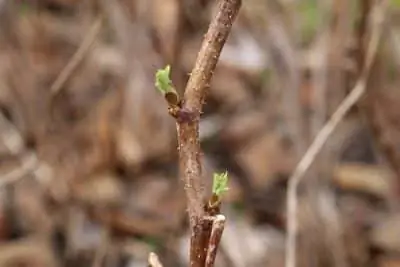
The result might surprise you, and not through “one generation evolution”. If you picked freely fertilized raspberry seeds from the harvest, the insects could have “mixed in” all sorts of foreign raspberries during pollination. Whether the result will satisfy you in terms of taste depends on what kind of raspberries grow in the area and how well the genes of these raspberries understand or mix with the genes of your raspberries. Always an attractive experiment, you just shouldn't have too set expectations about the outcome.
Raspberries and plant variety protection
Variety protection is governed by German law and European law, and if you have planted one of the new raspberry cultivars, variety protection may be governed by American law. In all of these laws there are legal terms that can be interpreted, a wide variety of courts have formed more or less fixed opinions for all possible constellations, international plant variety protection can be regulated by international treaties and/or dealer agreements - if you want to find out more about plant variety protection, you need a lot Time and you'll probably have to start over when you're done because things are always changing.
In some plant variety protection laws, private cultivation is expressly excluded, according to some you would have to pay license fees for root division, according to the German plant variety protection law you are even allowed to breed with protected varieties; Anyone who wants to assert plant variety protection violations must actively do so and prove it - in fact, you are safe in terms of variety protection as long as you plant plants with the full name Rubus idaeus 'Annamaria', 'Elida®', 'Himbo-Top®', ' Malling Promise' or 'Pokusa', just reproduce them for your garden and don't plan on doing a brisk trade with the results.
Raspberries with the name Rubus idaeus can be propagated, grown and sold unmolested if the other laws are observed; Rubus is the botanical name of the genus and idaeus is the botanical name of the species raspberries. The species itself, the actual original original plant, cannot be protected as a variety; in communities such as B. Free Saaten. Org. e. V. (Werden.frei-saaten.org) you can find out more about the many old raspberry varieties that are no longer subject to variety protection.
Limit raspberry propagation
The more cultivars of a plant species exist, the more difficult it is to distinguish careful breeding work (which of course still exists) from quick-breeding attempts that only want to cash in on the additional profit from the more expensive sale of the protected variety. On the other hand, the hobby gardener is helped by good relationships with a passionate gardening company and, more and more often, by simply using the original, for example with raspberries, when he has more than 1.000 varieties is desperate.
If this hobby gardener has collected the varieties with the best marketing names by then and hits the bull's eye with the choice of location for the wild raspberry, he could have a surprising experience: he will get to know the growth power of a plant that has lasted thousands of years Development has been optimized for a specific environment and grows in precisely this environment (raspberries are native plants). Can become quite powerful, growing within a radius of approx. two meters, displacing weaker plants.

If the wild raspberry (or the old raspberry variety with a similar growth habit) could not be placed in a location where it can spread out a little, you can “nail” it in its place from the start. The following methods can do this:
- Plant the raspberries in a row (“raspberry hedge”) and place a root or rhizome barrier around them
- It should extend over the entire width of the root zone of a good 1 m and is best introduced before planting
- Retrofitting is possible, but it's a pretty unpleasant dig, even after the roots have already been removed
- The roots of a raspberry can be “locked in” with bamboo rhizome barrier film, thick pond liner or special galvanized profiles
- The recycling variant uses old roof tiles or path slabs, the expert do-it-yourselfer pours a narrow concrete edge around the parking space
- Disadvantage: Impenetrable root barriers interrupt the moisture balance of the soil
- If you don't take careful countermeasures, the raspberry will dry up in the next hot summer or the roots will rot in the wet bath
- Alternative: You place the raspberry plants in pots with a capacity of at least 25 liters (or in the good old mortar pots)
- Disadvantage: Raspberries in pots need frost protection and the warmest place in the garden in winter, e.g. B. on a protective house wall
- Alternative No. 2: They regularly cut off runners that are too bold and then pull them out together with the roots


